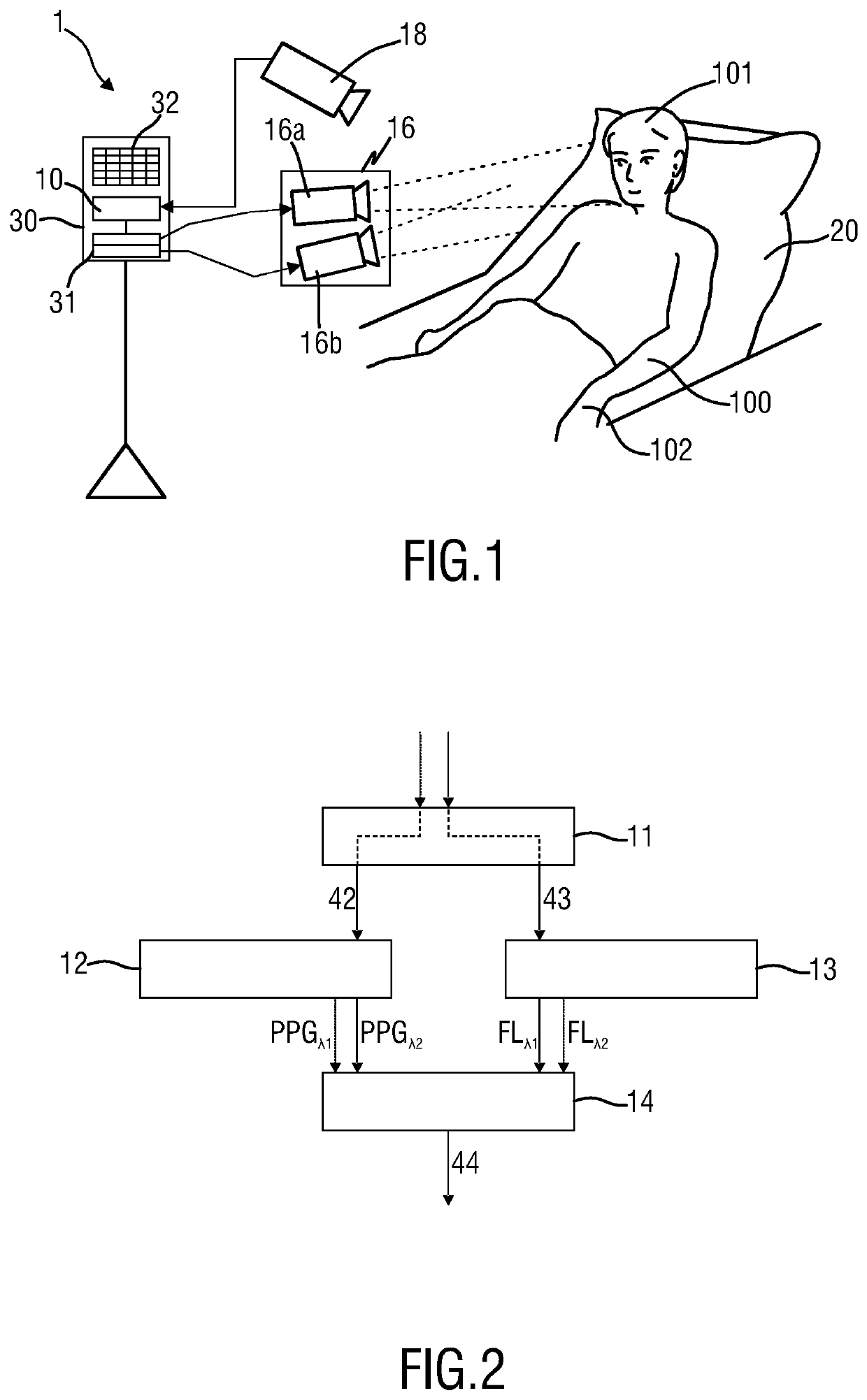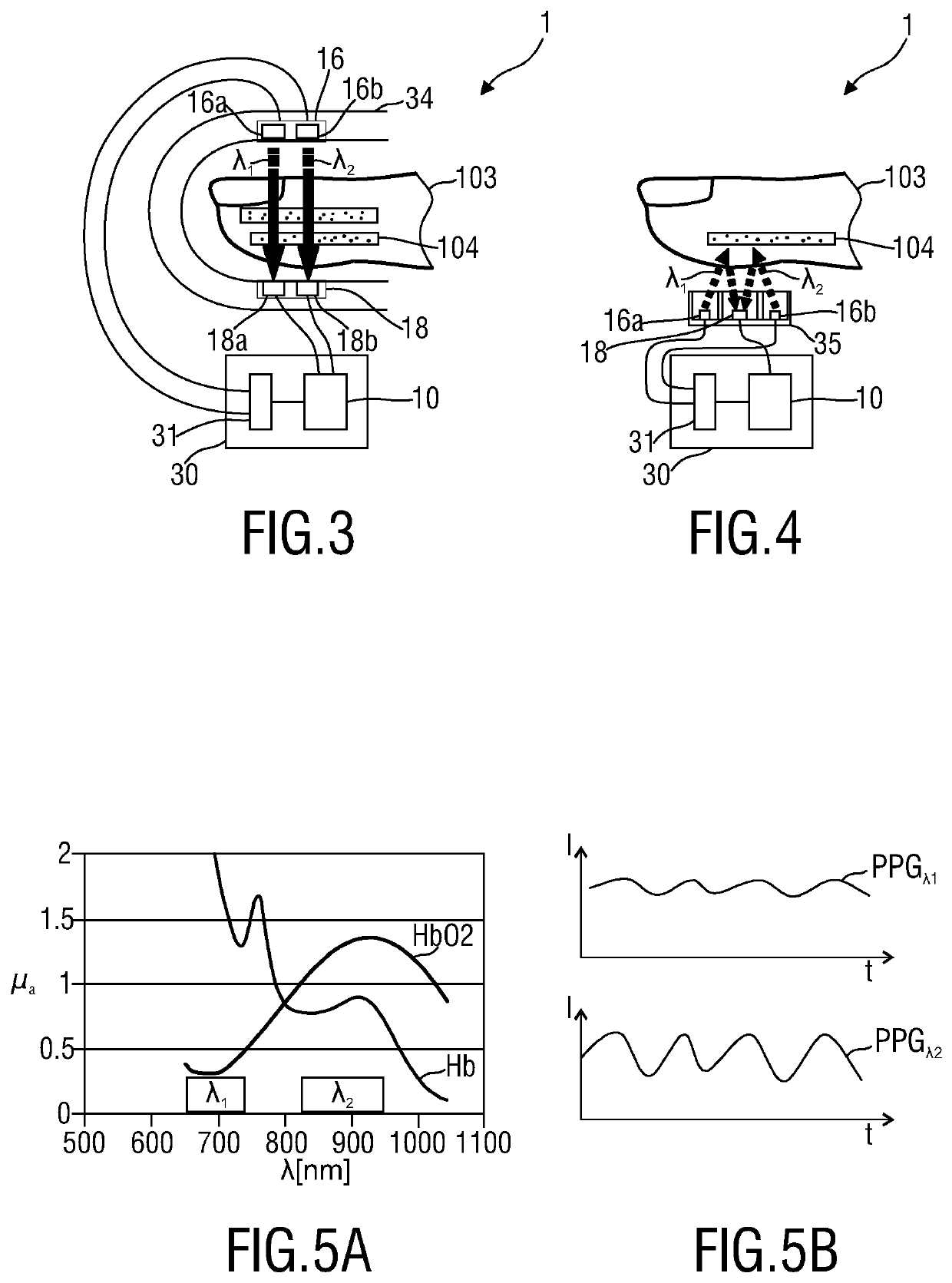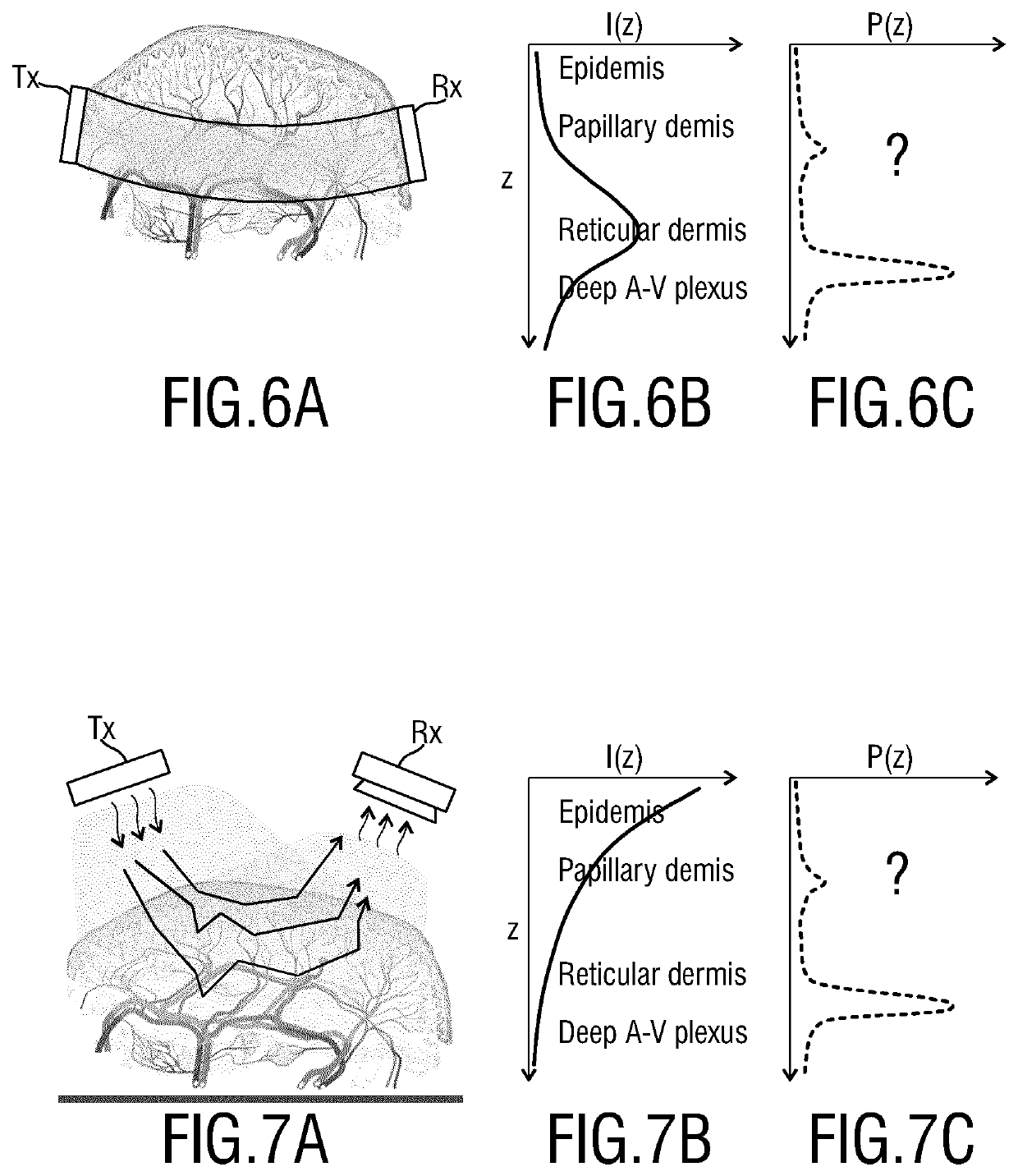Device for use in blood oxygen saturation measurement
a technology for oxygen saturation measurement and devices, applied in the field of medical technology, can solve the problems of limited accuracy, 3 saturation percent, alarm fatigue, etc., and achieve the effect of improving the accuracy of oxygen saturation measurement and reliability
- Summary
- Abstract
- Description
- Claims
- Application Information
AI Technical Summary
Benefits of technology
Problems solved by technology
Method used
Image
Examples
first embodiment
[0088]FIG. 1 shows a schematic diagram of a system 1 and a processing device 10 for use in blood oxygen saturation measurement of a subject 100 according to an aspect of the present invention. Hereinafter, the processing device 10 may be briefly referred to as device 10. The subject 100, in this example a patient lies in a bed 20, e.g., in a hospital or other healthcare facility, but may also be a neonate or premature infant, e.g. lying in an incubator, or a person at home or in a different environment such as a sports or leisure activity setting.
[0089]Besides the device 10, the system 1 comprises a coherent light source 16, also referred to as illumination source or illumination unit, arranged to emit coherent light at a first wavelength λ1 and at a second wavelength λ2 towards a tissue region of the subject 100. In the shown embodiment, the coherent light source 16 comprises a first laser source 16A, in particular comprising a laser diode for emitting coherent light at the first w...
third embodiment
[0100]FIG. 1 shows an embodiment, wherein the system 1 is arranged for non-contact, i.e., remote measurement. FIG. 3 and FIG. 4 show a second and a system 1 for use in blood oxygen saturation measurement of a subject arranged for contact-based measurement.
[0101]In the embodiment shown in FIG. 3, the system 1 for use in blood oxygen saturation measurements of the subject comprises a finger clip 34 and a control unit 30. The control unit 30 in turn comprises the device 10 and a light control unit 31 for operating a coherent light source 16. A finger clip for use in pulse oximetry can take various forms as known in the art. A conventional finger clip for pulse oximetry typically comprises a red LED as the first light emitter for emitting light at a first, red wavelength, for example at 660 nm, and a second, infrared LED, for example at 840 or 900 nm, for emitting infrared light towards a tissue region of the subject, here as a transmission-based measurement through the finger 103 of th...
PUM
 Login to View More
Login to View More Abstract
Description
Claims
Application Information
 Login to View More
Login to View More - R&D
- Intellectual Property
- Life Sciences
- Materials
- Tech Scout
- Unparalleled Data Quality
- Higher Quality Content
- 60% Fewer Hallucinations
Browse by: Latest US Patents, China's latest patents, Technical Efficacy Thesaurus, Application Domain, Technology Topic, Popular Technical Reports.
© 2025 PatSnap. All rights reserved.Legal|Privacy policy|Modern Slavery Act Transparency Statement|Sitemap|About US| Contact US: help@patsnap.com



